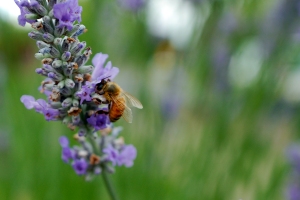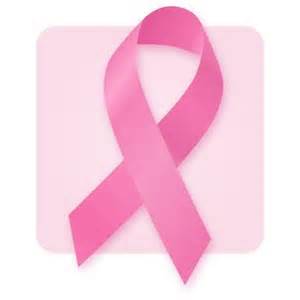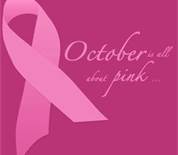 For me breast cancer is like the crack in my windshield I never bothered to get fixed. I don’t always notice it, sometimes I even forget about it and try to scratch it off as if it were a piece of dirt. Not dangerous now, but someday it could be. It is a part of my story and my life. It is not something that I need to be made aware of, or reminded that it exists. It is a part of my nightmares.
For me breast cancer is like the crack in my windshield I never bothered to get fixed. I don’t always notice it, sometimes I even forget about it and try to scratch it off as if it were a piece of dirt. Not dangerous now, but someday it could be. It is a part of my story and my life. It is not something that I need to be made aware of, or reminded that it exists. It is a part of my nightmares.
This October I chose to focus on learning more about Breast Cancer Awareness Month and the big players in the awareness movement. I watched the film Pink Ribbons, Inc., I asked my mother if she wanted to share her story, and I read countless stories of others. I reflected on the life of my grandmother and the way she chose to live after she was diagnosed. What I came away with is that the mainstream breast cancer movement is a sham. It makes me feel sick to my stomach, exploited, belittled, and dismissed; like my story, and the stories of the people I love do not matter. We live in the shadow of the almighty dollar.
After reflecting on the documentary Pink Ribbons, Inc. and the mainstream breast cancer awareness culture in general I have six major concerns.
1. Awareness does not equal action. This is something I had issues with even before I watched the film. Awareness is not the same kind of issue now as it has been in the past. You’d kind of have to live under a rock to have never heard of breast cancer. So, why do we keep calling them awareness campaigns? We know what it is and we know that it kills people. What we don’t know is what causes it.
2. Pinkwashing. Pinkwashing is when a company promotes, creates, or uses something that is linked to breast cancer at the same time as “fighting for the cause.” For example, when Komen partnered with KFC and the “Buckets for the Cure” campaign was launched. Another great example of this is the now infamous Komen endorsed perfume, “Promise Me” that was proven to have chemicals that interfered with hormones. There is no integrity. Not only is the disease being exploited but the public’s trust is as well. Why wouldn’t we trust someone who says the are working to fight breast cancer? And that is the whole point. Companies have learned that they can get people to pay a little bit more money for something if they believe it is going towards a good cause. These companies are profiting from the people’s pain and desire to help.
A really great website to check out if you are wondering what is in your cosmetics is called Skin Deep.
3. Thinking that a complex problem will be solved by throwing money at it. Throwing money at a complicated problem is such a “privileged” thing to do. I know I will be stepping on toes here but hear me out. Think about poverty. This is a complex problem that will not be solved by money alone. Yet people do not want to get involved, or work towards actually solving the problem when they can just write a check. It feels good to write that check. It makes you feel like you are doing something good, working towards a cause, and donating what you can. I would argue though that it is an empty satisfaction. Money (alone) does not solve problems, and it often ends up creating more.
I see this with the breast cancer awareness movement. Thousands of people will run/walk/jump/shop/anything for the cure. But where is that money going? How much of it is actually going towards research like they say? What about prevention and causes? What about research for women who are not white, middle class, and American? Breast cancer does not just affect white women and yet this is the group that nearly all of the research focuses on. There needs to be better coordination between organizations that are conducting studies. Move beyond the “convenient” sample.
Many women who are diagnosed with breast cancer do not have the major risk factors, so why are they developing it? The awareness movement has led women to believe that mammograms keep cancer away; that if you can just detect it early enough then you can get rid of it. If you eat right and excercise you can prevent cancer. This is so misleading. Being a woman puts you at risk for developing breast cancer. Period. It’s scary, but it’s true.
The fact that people are willing to do all these things to “fight breast cancer” show how motivated people are. It is coming from a good place and has created an amazing network. I would just challenge people to be more critical of where they are spending their money and what that money is actually going towards.
4. Women’s stories are being minimized under the pressure to be optimistic and perky. The optimistic, warm, fuzzy, pink approach to breast cancer puts enormous pressure on patients to be positive. As if women need more influences in their lives silencing their anger. This approach is alienating. Breast cancer is not a soft disease. It is not pretty. It is not feminine. It is not normal. And it is not pink. It is ugly. It is shocking and jarring to hear that you have cancer. Women who have been diagnosed need to feel safe to feel angry, cheated, and spiteful. They should not have to ask for permission. They should not have to apologize or feel like a grinch if have negative feelings. They should not have to feel okay about having cancer. If they want to get to that point they should be able to do it in their own time, in their own way, even if that includes screaming, ranting, and a lot of tears. When you see a pink ribbon instead of a woman who is afraid and hurting something needs to change.
5. Militarization of language. The way cancer is talked about can also be alienating to patients. The mainstream breast cancer organizations focus on celebrating survivors. Breast cancer is something to be fought, conquered, and survived. What about the women who develop stage four cancer and die? Did these women lose the battle? Did they not fight hard enough? Did these women fail? These are things that are implied through the use of militarized language. The message that if you fight hard enough you can beat it is so damaging. There is no balance and it leaves people vulnerable, both patients and the people who care about them. Breast cancer is not an army to be mobilized against. It is a disease. It is a put down to the women who have not and are not “surviving.” You cannot have this message without seeing people who die as having failed. This is so not the case, and even as I’m sitting here typing this I’m tearing up. This message does not allow women who do not recover to die with dignity in a perfectly healed state. That is so wrong and unfair.
We need to be teaching women to balance hope with the understanding, and the reality, that it may not work. You may not respond to chemo. Even if you get your breasts removed it may come back. This does not mean that you have failed or that you are losing the battle. Not every story is happy, shiny, pretty and pink.
6. Reducing women to a body part. Women are more than their breasts. Enough said.
What do you think when you see a pink ribbon?
Read Part 1 Here
Check out these great websites:
FORCE
Think Before you Pink
Breast Cancer Fund
Breast Cancer Action






 Cancer Awareness Month is a different story. This was started by a public relations expert at
Cancer Awareness Month is a different story. This was started by a public relations expert at 
